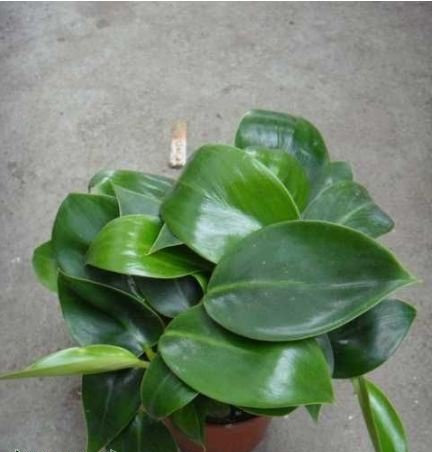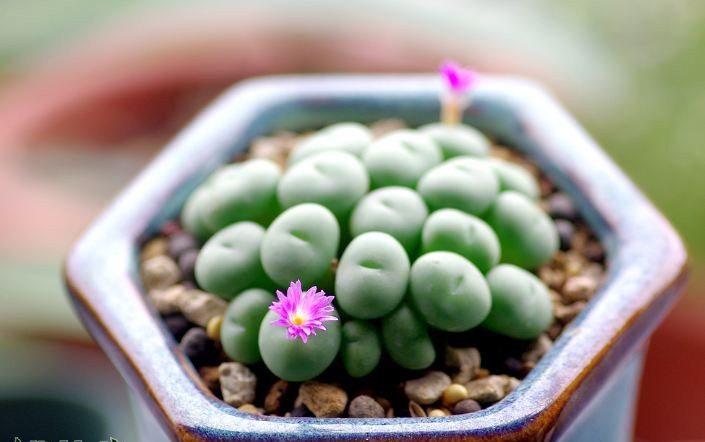How to raise Magnolia in the South
Clivia as both considerable flowers and leaves of herbs loved by flower friends, especially in the northeast where home flowers are inevitable-potted clivia, but clivia is not only cultivated in the north, the south is also suitable for planting. So how do you raise Clivia in the south of the Yangtze River?
Cultivation of Clivia, compared with the north, the favorable conditions are high temperature, in the lowest temperature of 5 degrees Celsius-o degrees Celsius, not only in indoor potted plants, but also in the courtyard in the open air cultivation, winter does not have to be like the northeast region for Clivia heating. Especially in the southern coastal areas, the natural conditions are better, the air is humid, the climate is pleasant, winter is not cold, summer is not hot, it is suitable for the growth of Clivia.
Jiangxi south of the cultivation of clivia, clivia in summer to create a suitable environment for growth, indoor potted plants had better set up air conditioning cooling, such as no air conditioning equipment, can be placed in indoor ventilation, spray flowers and leaves every day, 3-5 days to pot soil irrigation-times permeable. This keeps the leaves fresh and prevents root rot due to dehydration. In outdoor cultivation, shade shed shall be set up in high temperature season to make it receive scattered light irradiation, and attention shall be paid to increasing environmental humidity to avoid plant damage caused by dry environment.
Cultivation of clivia pot soil is best mixed with forest decay leaf soil-a certain proportion of coarse sand, this kind of soil fertile culture, bulky, good permeability, conducive to root cultivation. Where such a basin is lacking, soil can be collected on the spot. For example, Guangzhou-belt can be used pond mud, broken bricks and charcoal pot soil for cultivation, the effect is also very good. However, no matter what kind of basin is used, it should have strong air permeability and water permeability.
Clivia is a fertile flower, fertilization should also be based on the principle of local materials. According to the growth needs of Clivia plants, sufficient nitrogen, phosphorus, potassium and other trace elements can be supplied. Fertilization should be based on plant fertilizer, such as peanut cake, soybean cake, sesame sauce residue, etc., as far as possible to reduce the application of animal fertilizer, in order to maintain its leaf color fresh.
How to raise Clivia in the south of Yangtze River
Clivia as both flowers and leaves can be seen herbs loved by flower friends, especially in the northeast where home flowers inevitably without a pot of clivia, but clivia is not only the northern region can be cultivated, the southern region is also suitable for planting. So how do you raise Clivia in the south of the Yangtze River?
Clivia cultivation, compared with the north, the favorable conditions are high temperature, in the lowest temperature of 5℃-0 ℃, not only in indoor potted plants, but also in the open air cultivation in the courtyard, winter does not have to be like the northeast as heating Clivia. Especially in the southern coastal areas, the natural conditions are better, the air is humid, the climate is pleasant, winter is not cold, summer is not hot, it is suitable for the growth of Clivia.
To cultivate Clivia in the south of Jiangxi Province, it is necessary to create an environment suitable for its growth in summer. It is best to set up air conditioning for indoor potted plants to cool down. If there is no air conditioning equipment, it can be placed in an indoor ventilated place, spray water on flowers and leaves every day, and irrigate the pot soil once every 3-5 days. This keeps the leaves fresh and prevents root rot due to dehydration. In outdoor cultivation, shade shed shall be set up in high temperature season to make it receive scattered light irradiation, and attention shall be paid to increasing environmental humidity to avoid plant damage caused by dry environment.
Cultivation of clivia pot soil is best mixed with a certain proportion of forest decay soil coarse sand, this kind of culture soil fertile, bulky, good permeability, conducive to root cultivation. Where such a basin is lacking, soil can be collected on the spot. For example, Guangzhou area can be used pond mud, broken bricks and charcoal pot soil for cultivation, the effect is also very good. However, no matter what kind of basin is used, it should have strong air permeability and water permeability.
Clivia is a fertile flower, fertilization should also be based on the principle of local materials. According to the growth needs of Clivia plants, sufficient nitrogen, phosphorus, potassium and other trace elements can be supplied. Fertilization should be based on plant fertilizer, such as peanut cake, soybean cake, sesame sauce residue, etc., as far as possible to reduce the application of animal fertilizer, in order to maintain its leaf color fresh.
How to raise Clivia in southern China
Soil requirements for growing Clivia in southern China
Cultivation of clivia pot soil is best mixed with a certain proportion of forest decay soil coarse sand, this kind of culture soil fertile, bulky, good permeability, conducive to root cultivation. Where such a basin is lacking, soil can be collected on the spot.
For example, Guangzhou area can be used pond mud, broken bricks and charcoal pot soil for cultivation, the effect is also very good. However, no matter what kind of basin is used, it should have strong air permeability and water permeability.
Temperature requirements for growing Clivia in southern China
Clivia cultivation, compared with the north, the favorable conditions are high temperature, in the lowest temperature of 5℃-0 ℃, not only in indoor potted plants, but also in the open air cultivation in the courtyard, winter does not have to be like the northeast as heating Clivia.
Especially in the southern coastal areas, the natural conditions are better, the air is humid, the climate is pleasant, there is no cold in winter, no heat in summer, it is suitable for the growth of Clivia.
Fertilization Methods for Clivia in South China
Clivia is a fertile flower, fertilization should also be based on the principle of local materials. According to the growth needs of Clivia plants, sufficient nitrogen, phosphorus, potassium and other trace elements can be supplied.
Fertilization should be based on plant fertilizer, such as peanut cake, soybean cake, sesame sauce residue, etc., as far as possible to reduce the application of animal fertilizer, in order to maintain its leaf color fresh.
Watering method of Clivia in South China
To cultivate Clivia in the south of Jiangxi Province, it is necessary to create an environment suitable for its growth in summer. It is best to set up air conditioning for indoor potted plants to cool down. If there is no air conditioning equipment, it can be placed in an indoor ventilated place, spray water on flowers and leaves every day, and irrigate the pot soil once every 3-5 days. This keeps the leaves fresh and prevents root rot due to dehydration.
In outdoor cultivation, shade shed shall be set up in high temperature season to make it receive scattered light irradiation, and attention shall be paid to increasing environmental humidity to avoid plant damage caused by dry environment.
- Prev

The Culture method of Golden Diamond Flower
Golden diamond flower is a plant of Araceae, and the breeding method is very simple, also known as golden diamond vine green velvet, cherry angel vine green velvet, feathered green taro, spring feather, spring taro, Camptotheca acuminata, famous evil king, shade plant, and strong life. It is a more popular indoor foliage plant, suitable for home, office building, hotel, hotel and other places.
- Next

Maintenance methods and skills of group Jasper
Group Jasper is a small and delicate succulent plant, Amygdaceae succulent flower genus, plants in groups, with extremely fleshy opposite leaves, green, unpatterned, flat top, shallow seams in the center, purple-red flowers bloom from shallow seams in autumn, a single flower can bloom for 5 to 7 days. Group Jasper originated in South Africa and began in autumn.
Related
- Fuxing push coffee new agricultural production and marketing class: lack of small-scale processing plants
- Jujube rice field leisure farm deep ploughing Yilan for five years to create a space for organic food and play
- Nongyu Farm-A trial of organic papaya for brave women with advanced technology
- Four points for attention in the prevention and control of diseases and insect pests of edible fungi
- How to add nutrient solution to Edible Fungi
- Is there any good way to control edible fungus mites?
- Open Inoculation Technology of Edible Fungi
- Is there any clever way to use fertilizer for edible fungus in winter?
- What agents are used to kill the pathogens of edible fungi in the mushroom shed?
- Rapid drying of Edible Fungi

